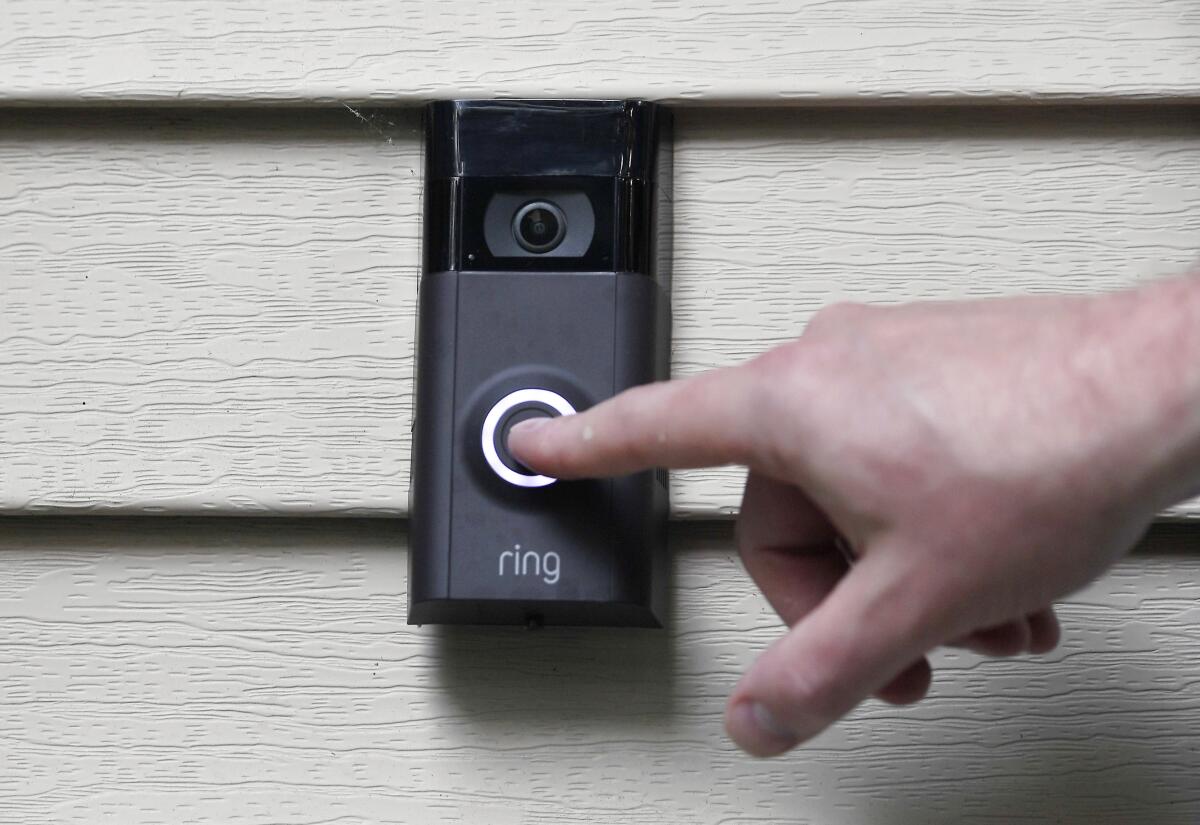Oxnard ‘swatting’ call, with police taunted via Ring camera, is part of federal indictment

- Share via
Two men broke into a dozen Ring home security camera accounts across the U.S., placed bogus emergency calls to police, then livestreamed officers’ armed responses on social media, authorities said Monday.
Kya C. Nelson, 21, of Racine, Wis., and James McCarty, 20, of Charlotte, N.C., were indicted Friday by a federal grand jury in Los Angeles for the “swatting” incidents in California, Michigan, Montana, Georgia, Virginia, Texas, Illinois, Florida and Alabama.
The two illicitly obtained usernames and passwords for Yahoo email accounts, then used those credentials to gain access to the Ring accounts of people who used the same usernames and passwords for the web-linked doorbell camera system, prosecutors said.

After taking control of the Ring system at a home in North Port, Fla., McCarty called local police and claimed he had killed his wife, rigged the home with explosives and was holding a hostage, according to the indictment.
In another case, Nelson or a co-conspirator posed as a child in a call to Oxnard, Calif., police, reporting that the father was wielding a handgun and that shots were fired, the indictment charged. When police arrived, according to court documents, Nelson used the Ring audio system “to verbally taunt” the officers.
Nelson, who also goes by the name “ChumLul,” was recently jailed in Kentucky for an unrelated case involving bomb threats, and McCarty was in federal custody in Arizona in a separate case involving bomb threats and cyberstalking, according to Ciaran McEvoy, a spokesman for the U.S. attorney’s office in Los Angeles.
In a statement, Ring said it takes “the security of our customers extremely seriously” and has taken steps to strengthen protections, including requiring customers to verify their identity when logging in and scanning the web for stolen Ring passwords.
More to Read
Sign up for Essential California
The most important California stories and recommendations in your inbox every morning.
You may occasionally receive promotional content from the Los Angeles Times.














